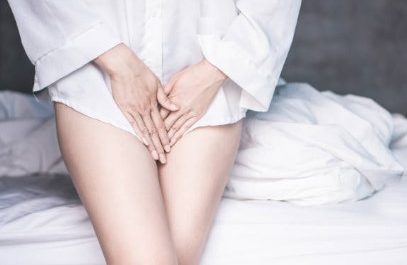If you experience a sudden painful lump in your breast, it’s important to have it evaluated by a healthcare professional as soon as possible. While many breast lumps are benign and not cause for concern, sudden pain in a breast lump can be a symptom that warrants medical attention. Here are some possible causes and considerations.
Infection
An infection in the breast, known as mastitis, can cause a painful lump. It is more common in breastfeeding women but can occur in non-lactating individuals as well. In addition to a lump, you may also experience redness, warmth, swelling, and fever.
Cysts
Fluid-filled sacs known as cysts can develop in the breast tissue and cause pain. They may feel like a lump and can be tender to the touch.
Fibrocystic changes
Hormonal changes during the menstrual cycle can lead to the development of benign lumps and areas of thickened breast tissue. These changes can cause discomfort or pain.
Trauma or injury
Injury or trauma to the breast, such as a bruise or contusion, can cause pain and the formation of a lump.
Breast abscess
A collection of pus within the breast tissue can cause a painful lump. It may be accompanied by redness, warmth, swelling, and fever.
While some of these causes may not require urgent medical attention, it is important to have a healthcare professional assess the lump to determine the cause and appropriate treatment. They may perform a physical examination, order imaging tests (such as mammography or ultrasound), or recommend a biopsy if needed.
Remember, it is always better to err on the side of caution and seek medical evaluation for any sudden, painful, or concerning breast lump. Only a healthcare professional can provide an accurate diagnosis and recommend appropriate treatment options based on your specific situation.
Diagnostic Test for Painful Lump in Breast
When you have a painful lump in your breast, it is important to have it evaluated by a healthcare professional. They will be able to determine the cause of the lump and recommend appropriate diagnostic tests. Some common diagnostic tests for a painful lump in the breast include:
Clinical breast examination
A healthcare provider will perform a physical examination of the breast, palpating the lump to assess its size, shape, texture, and tenderness.
Mammogram
This is an X-ray imaging test that can detect abnormalities in the breast tissue, such as lumps or calcifications. Mammograms are commonly used for breast cancer screening and can help determine if further evaluation is needed.
Ultrasound
An ultrasound uses sound waves to create images of the breast tissue. It can help differentiate between solid masses and fluid-filled cysts, providing additional information about the nature of the lump.
Biopsy
If the lump is suspicious or cannot be definitively diagnosed through other tests, a biopsy may be performed. This involves taking a small sample of tissue from the lump for further examination under a microscope. The biopsy can help determine if the lump is benign or cancerous.
The specific diagnostic tests recommended will depend on various factors, such as your age, medical history, the characteristics of the lump, and the healthcare provider’s clinical judgment. They will consider these factors to determine the most appropriate course of action for further evaluation.
If you have a painful lump in your breast, it is important not to delay seeking medical attention. Early detection and prompt evaluation can help determine the cause and guide appropriate treatment if necessary.
How to prevent Painful Lump in Breast
While it is not always possible to prevent all breast lumps, there are certain steps you can take to promote breast health and potentially reduce the risk of developing painful lumps. Here are some measures you can consider:
Regular breast self-exams
Perform monthly breast self-exams to become familiar with the normal look and feel of your breasts. This can help you identify any new or unusual lumps or changes promptly and seek medical attention if needed.
Maintain a healthy lifestyle
Adopting a healthy lifestyle can contribute to overall breast health. This includes maintaining a balanced diet, engaging in regular physical activity, managing stress levels, and avoiding smoking and excessive alcohol consumption.
Wear properly fitted bras
Wearing a properly fitted bra can provide support and prevent excessive pressure on the breast tissue. Consider getting professional bra fittings to ensure you are wearing the correct size.
Hormonal balance
Hormonal changes can contribute to the development of breast lumps. If you experience hormonal fluctuations, such as during the menstrual cycle or menopause, discuss management strategies with your healthcare provider.
Breastfeeding
If you have the opportunity and desire to breastfeed, doing so may offer some protection against certain types of breast lumps and breast cancer. Breastfeeding helps to reduce lifetime exposure to estrogen, which can have a protective effect.
Regular medical check-ups
Schedule routine visits with your healthcare provider for breast exams and mammograms as recommended based on your age and individual risk factors. These screenings can help detect any abnormalities or changes in breast tissue early.
Remember that while these measures may promote breast health, they cannot guarantee the prevention of all breast lumps. If you notice any concerning changes in your breast, such as new lumps, persistent pain, or other unusual symptoms, it is important to consult with a healthcare professional for proper evaluation and guidance.




